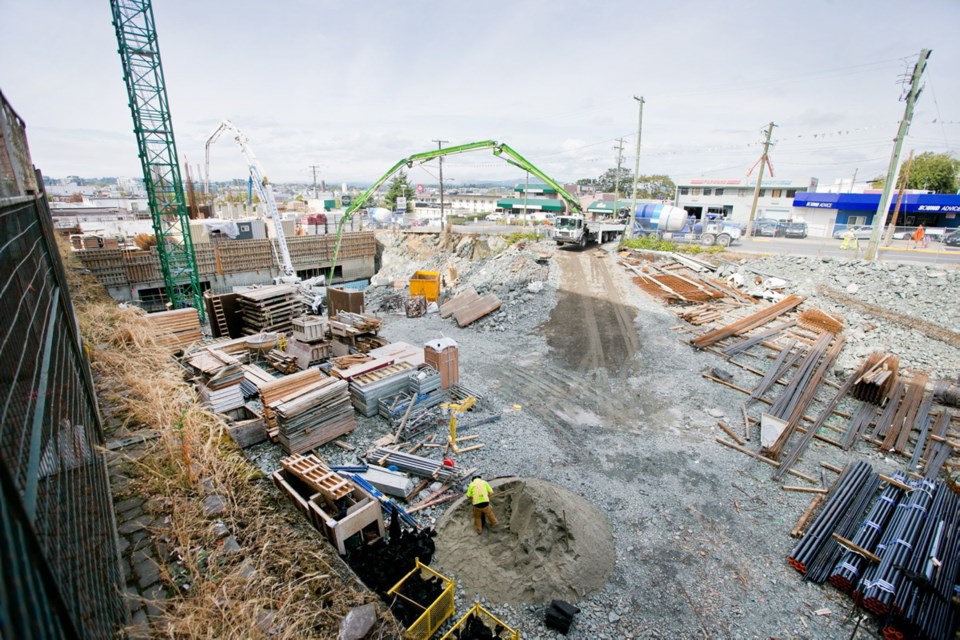Driven by a resurgent homebuilding sector, Vancouver Island’s construction industry is having a strong year — and the trend should continue through 2016, the Vancouver Island Construction Association says.
The association, which represents companies in the commercial and industrial sectors, noted building permits issued through the first half of this year suggest the industry is well ahead of last year’s pace.
“Residential construction activity is showing the strength of Vancouver Island’s construction sector in 2015,” said Greg Baynton, chief executive of VICA. “Decreases in interest rates this year are keeping financing affordable which will support future investment in other segments of the economy.”
Baynton said overall permit values are likely to be up between five and 10 per cent for the year, which will pave the way for a strong 2016 as projects start coming out of the ground.
The total value of permits issued through the second quarter of this year amounted to $710 million on the Island, a 12.9 per cent increase over the same time in 2014. Residential permits accounted for all of the gain with a 29.9 per cent increase. Non-residential permits decreased 14.7 per cent.
In Greater Victoria, total permits issued were valued at $363 million through the first half of the year, 16 per cent higher than last year.
Again, it was residential leading the way, as there was a 48.5 per cent increase to $268 million over the first half of 2014.
Baynton noted while non-residential permits may have dropped off, it doesn’t mean there isn’t plenty of activity in that sector as large commercial and industrial projects often require years of work to finish.
“The actual building activity follows for some time afterward,” he said.
There is a lot of activity “just ramping up” like the work on the North Island Hospitals Project and in office projects in Victoria’s downtown and legislative precinct that will continue for years.
“Some of our members are reporting they are booked out into 2016 and some even into 2017 already,” Baynton said. “I think the next three years look pretty promising.”
That sentiment is being echoed by residential builders, who have seen a strong rebound this year in consumer confidence.
“Year to date, it’s been strong, but it’s been reasonable in the sense we were digging ourselves out of a hole,” said Casey Edge, executive director of the Victoria Residential Builders Association. “Residential construction is still recovering from the global economic crisis in 2009.”
As it stands, Edge expects the region to start 2,000 new homes this year.
“That’s not a boom year, but a reasonable mark,” he said. Demand is being driven by historic low interest rates and decent employment rates.
Edge said there is reason for optimism in 2016 as well if the economy remains strong. But there is an issue —both residential and non-residential builders will once again be dealing with a looming labour shortage due to the retirement of baby boomers and fewer trades people entering the workforce.
“Over the last couple of years it has been intensifying on the Island,” said Baynton. VICA and its provincial equivalent have partnered with high schools and trade schools on several initiatives to get more young people interested in trades.
“Unfortunately, there’s no silver bullet and it will take time to fix. This is not a short-term problem.”
Strong construction activity this year meant 33,400 people were employed in the sector in the first half of 2015 — 16.8 per cent higher than in the same period in 2014. Victoria saw a 10.9 per cent increase in the number of people employed in construction.



